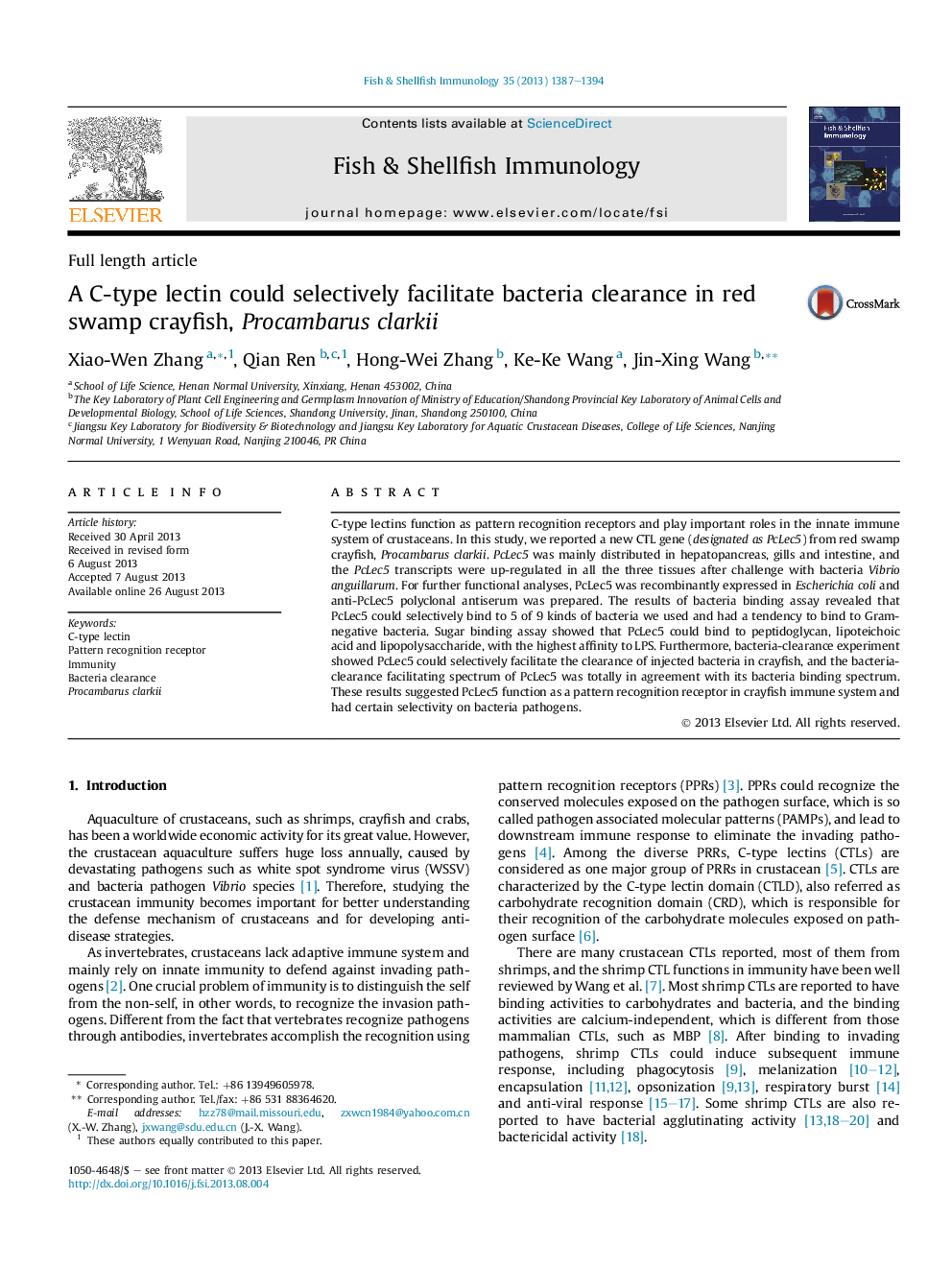| Article ID | Journal | Published Year | Pages | File Type |
|---|---|---|---|---|
| 2431709 | Fish & Shellfish Immunology | 2013 | 8 Pages |
•PcLec5 transcripts were up-regulated after challenge with Vibrio anguillarum.•PcLec5 could selectively bind to 5 of 9 kinds of bacteria.•PcLec5 could bind to glycoconjugates of bacteria, with the highest affinity to LPS.•PcLec5 could selectively facilitate the clearance of injected bacteria in crayfish.
C-type lectins function as pattern recognition receptors and play important roles in the innate immune system of crustaceans. In this study, we reported a new CTL gene (designated as PcLec5) from red swamp crayfish, Procambarus clarkii. PcLec5 was mainly distributed in hepatopancreas, gills and intestine, and the PcLec5 transcripts were up-regulated in all the three tissues after challenge with bacteria Vibrio anguillarum. For further functional analyses, PcLec5 was recombinantly expressed in Escherichia coli and anti-PcLec5 polyclonal antiserum was prepared. The results of bacteria binding assay revealed that PcLec5 could selectively bind to 5 of 9 kinds of bacteria we used and had a tendency to bind to Gram-negative bacteria. Sugar binding assay showed that PcLec5 could bind to peptidoglycan, lipoteichoic acid and lipopolysaccharide, with the highest affinity to LPS. Furthermore, bacteria-clearance experiment showed PcLec5 could selectively facilitate the clearance of injected bacteria in crayfish, and the bacteria-clearance facilitating spectrum of PcLec5 was totally in agreement with its bacteria binding spectrum. These results suggested PcLec5 function as a pattern recognition receptor in crayfish immune system and had certain selectivity on bacteria pathogens.
